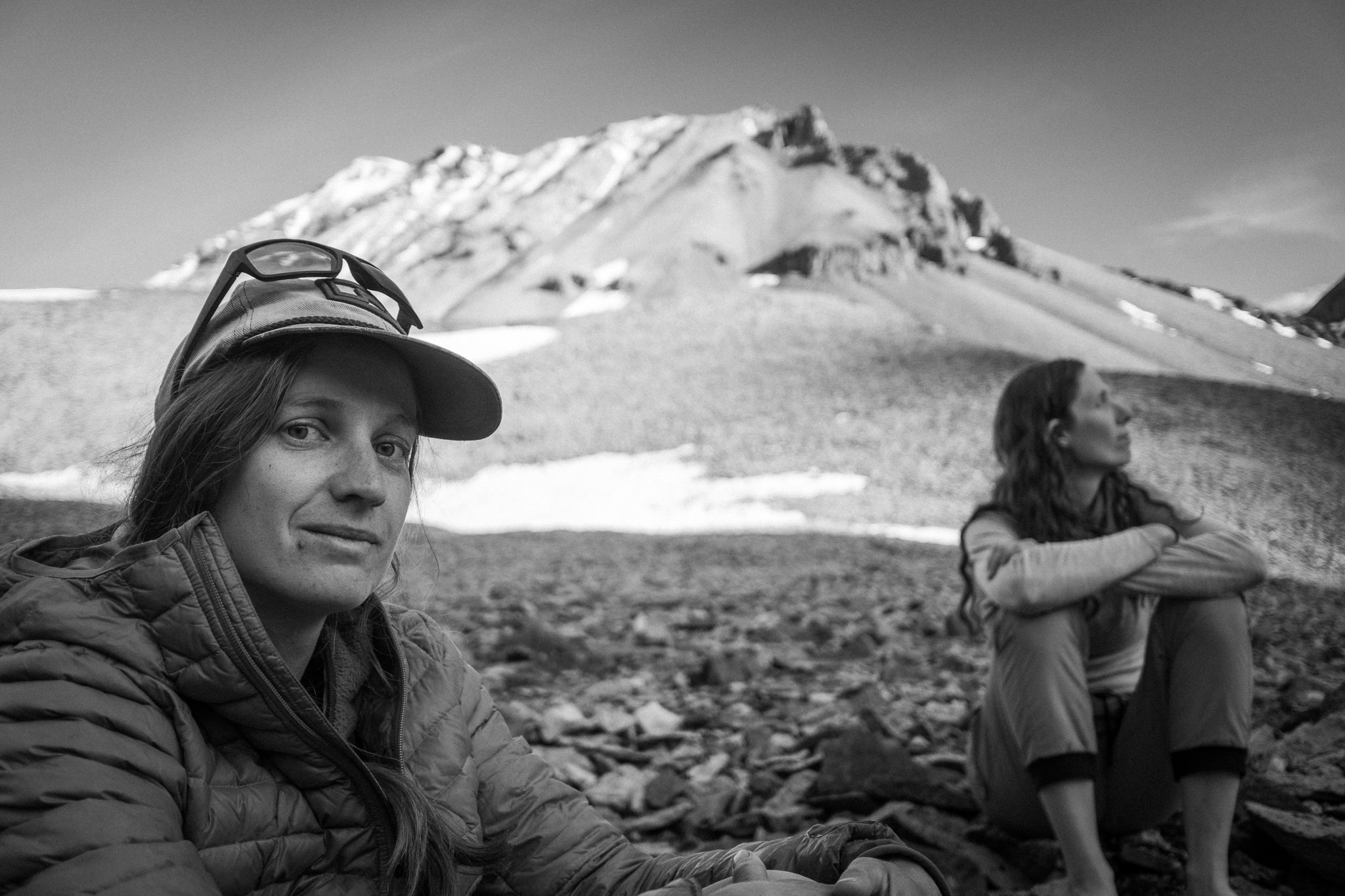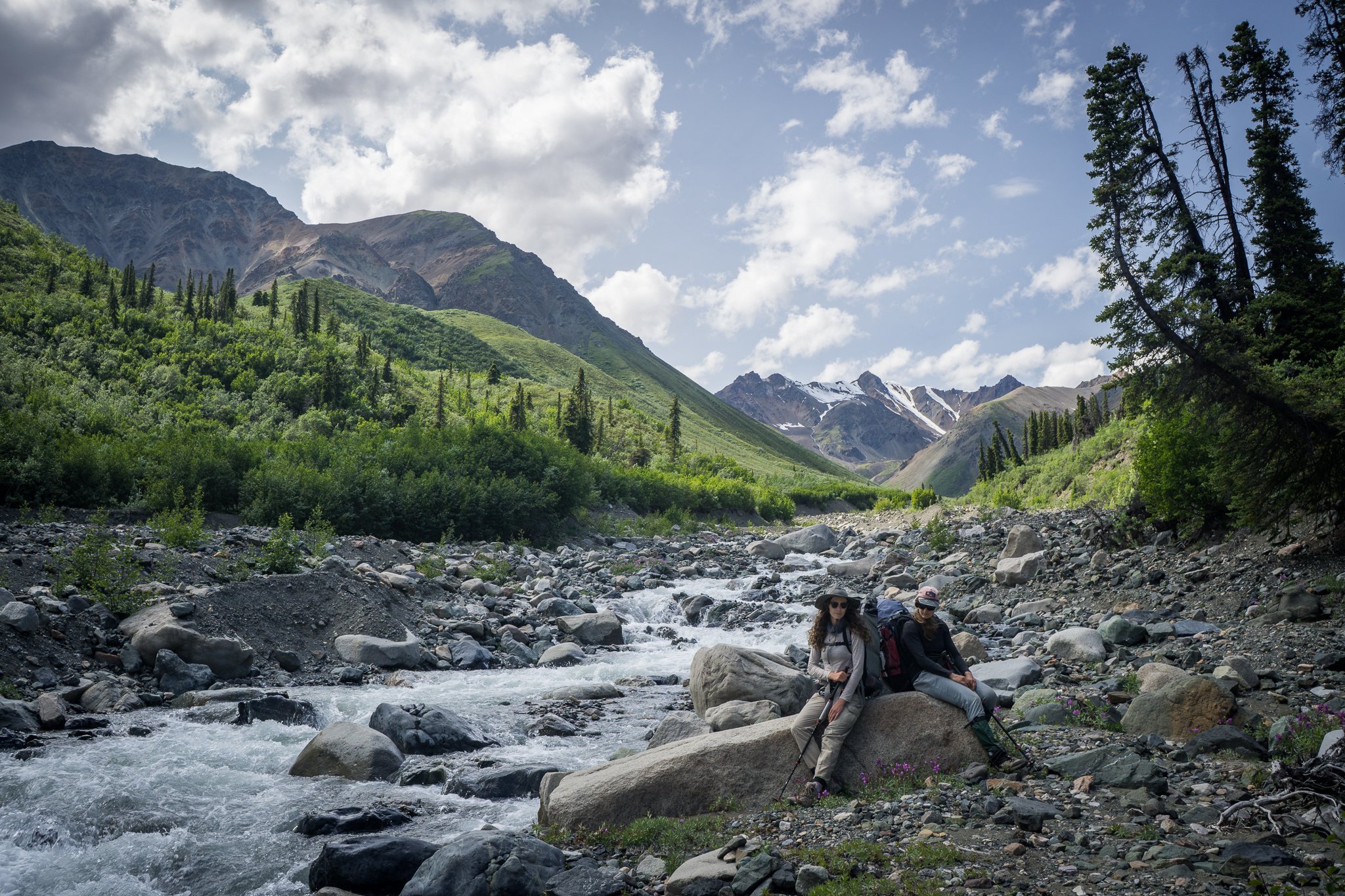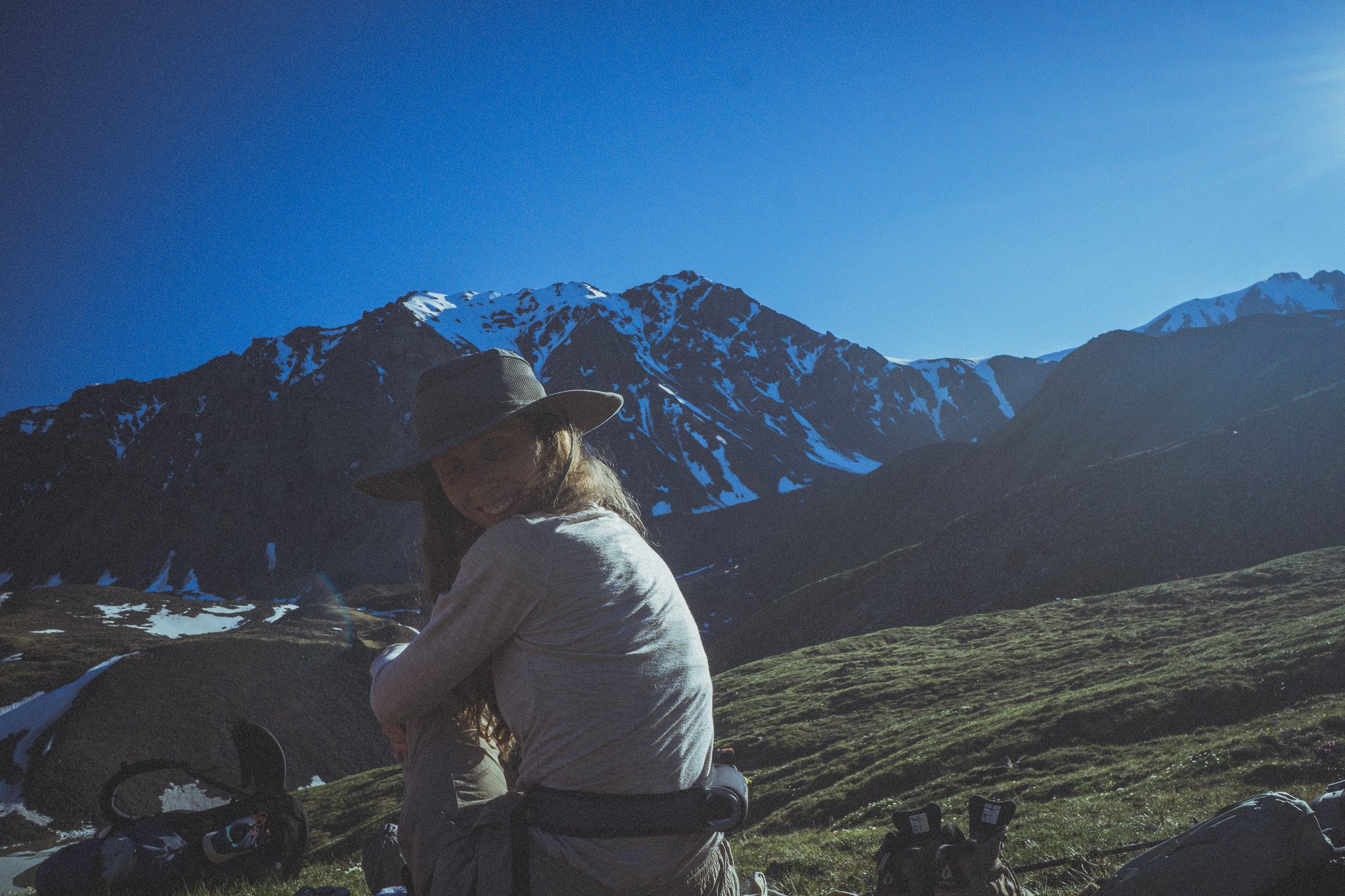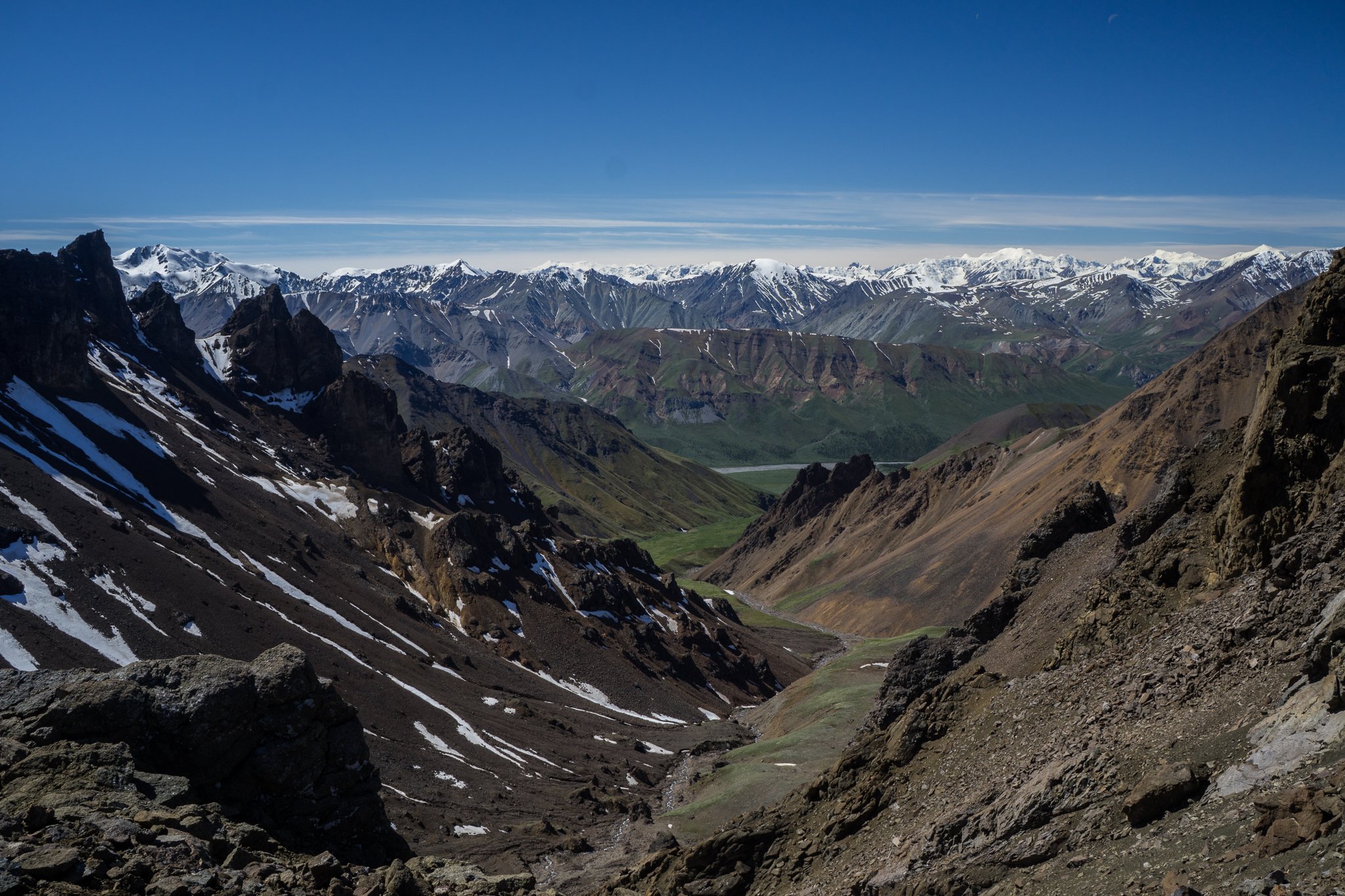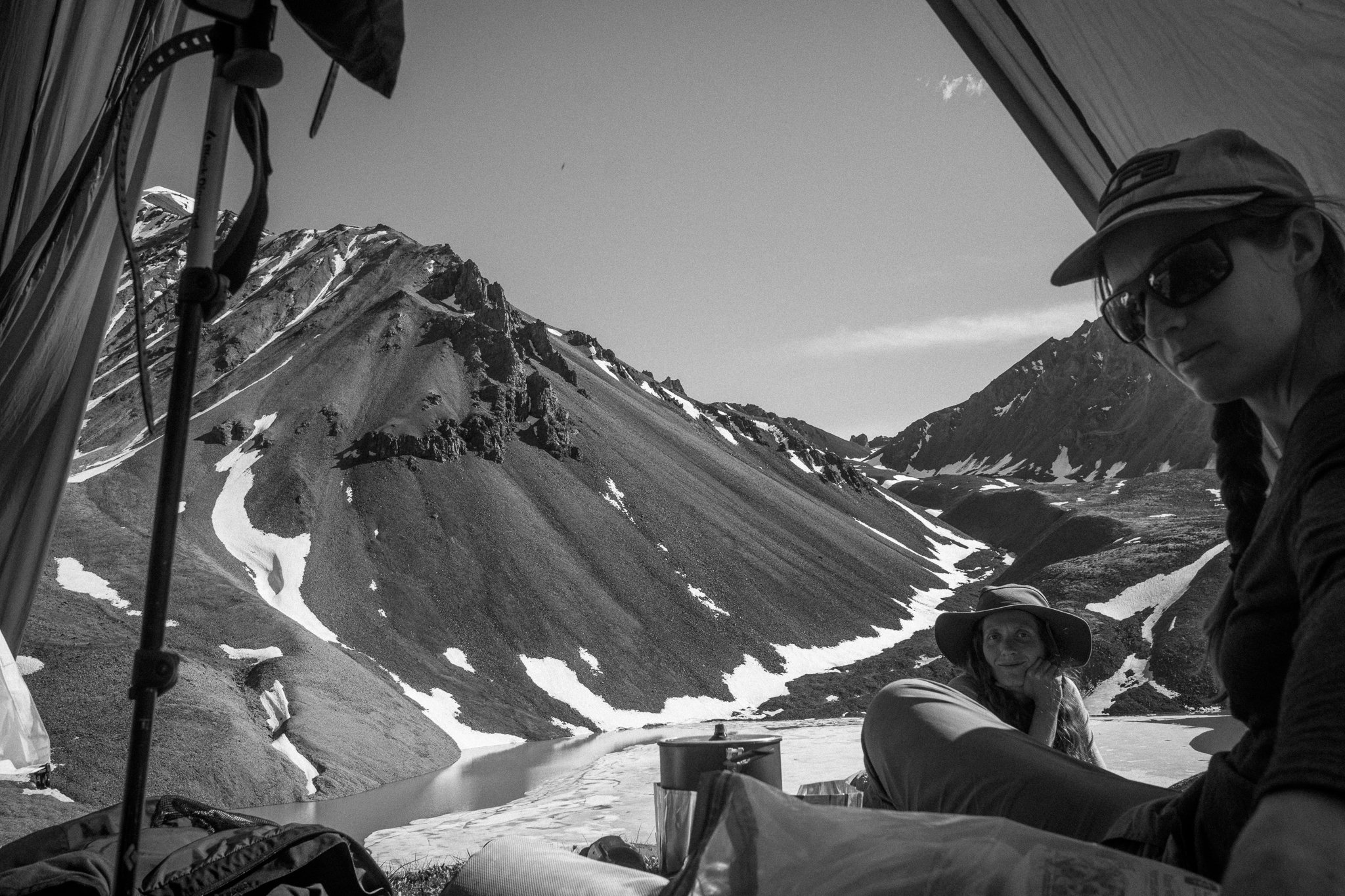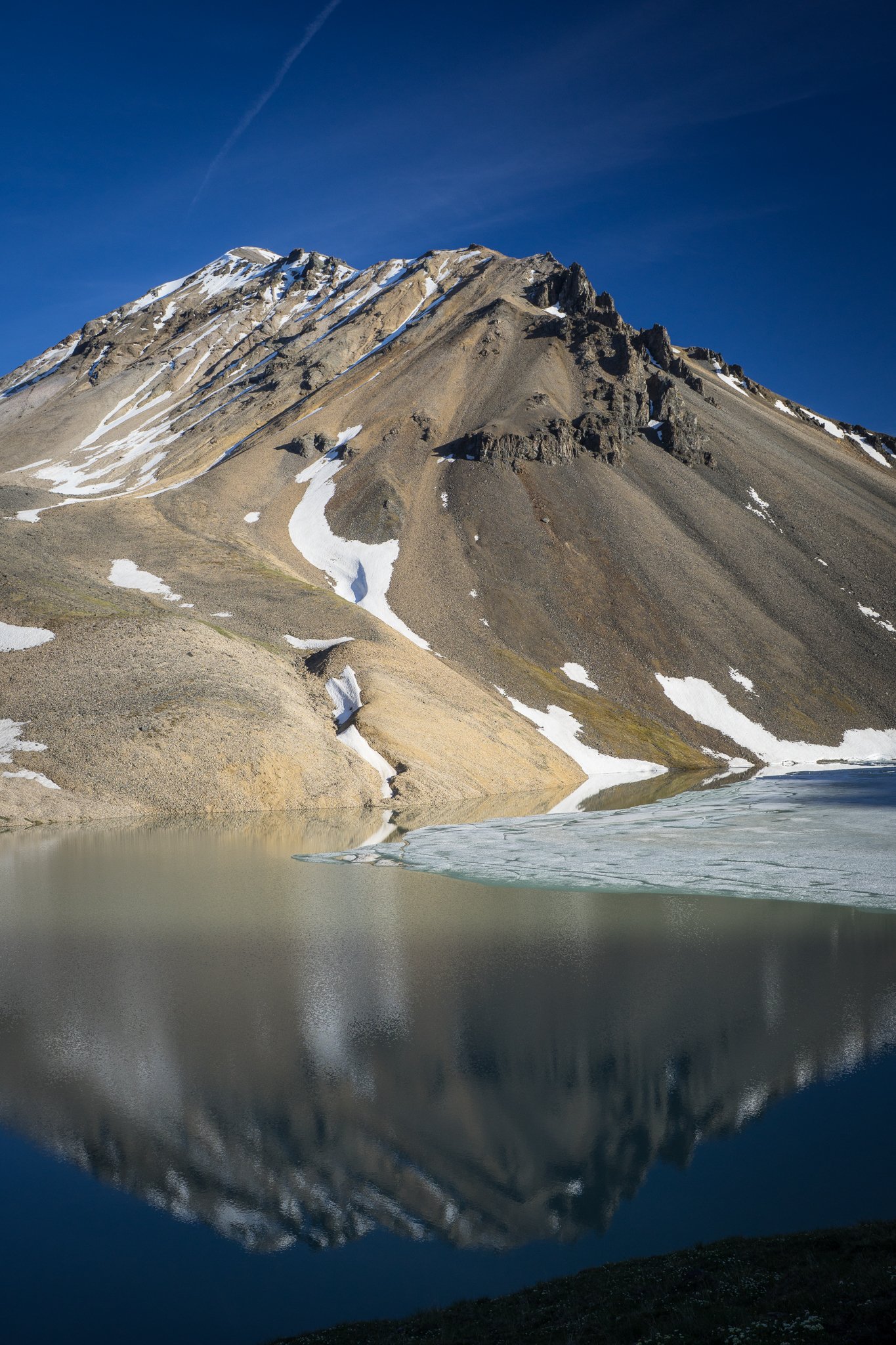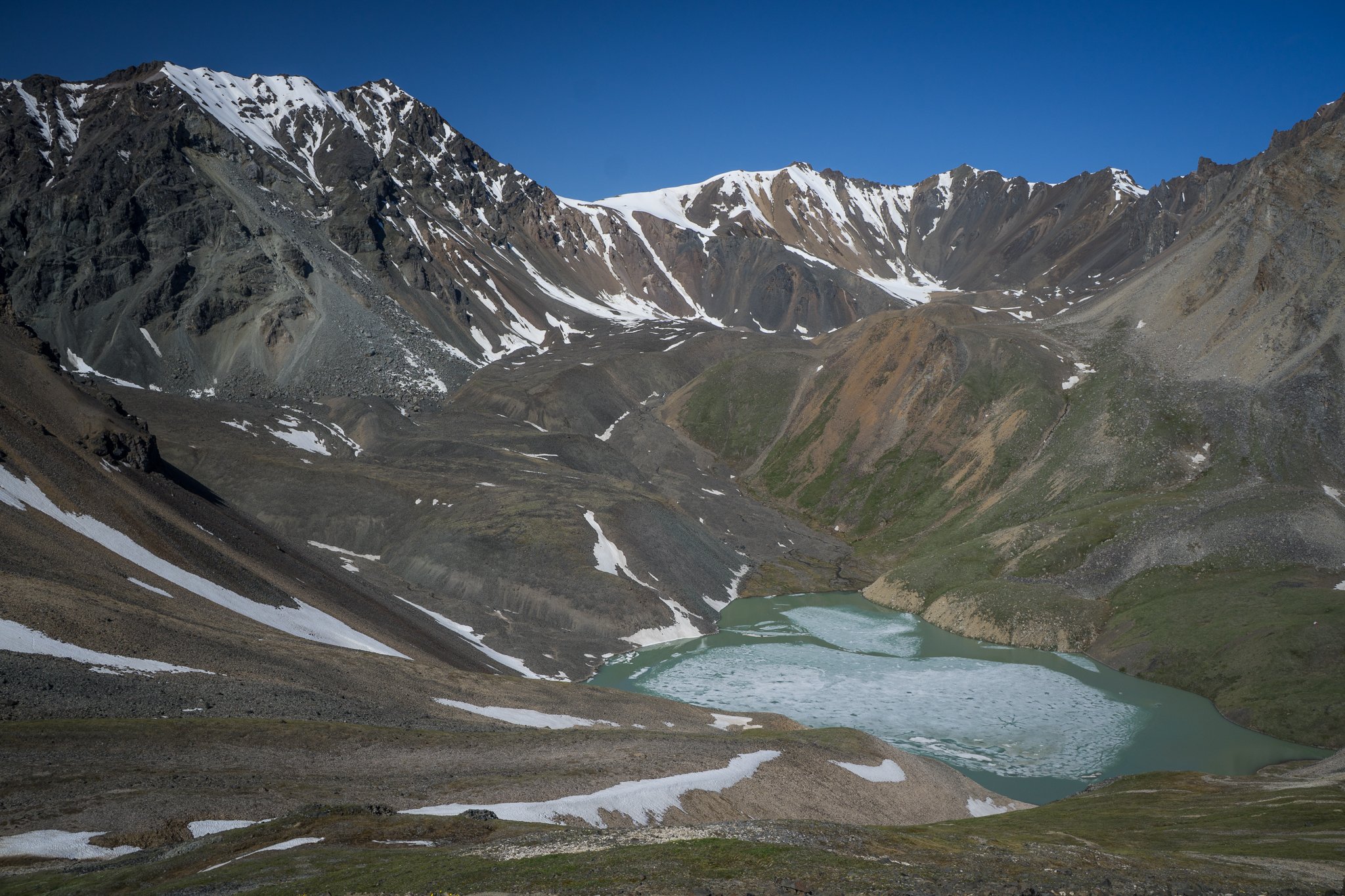While I was busy trying not to be entirely consumed by the bushes pulling at my legs, I looked back and Sarah-Monique was stuffing herself with berries. In my horse blinders/“I’m a guide I need to navigate” mindset, I had completely overlooked that the bushes surrounding us were covered in every berry imaginable. Crow berries, bearberries, cloud berries and cranberries galore!! You could reach down and pull up a handful of berries every time. We had lucked out and arrived in peak berry season.
A few more hours and many gratuitous handfuls of berries later, we reached the pass and entered a completely different landscape. Entering the Ruby Range proper, the terrain transformed into an alpine tundra devoid of any trees or thick bush. We were also relieved to find a well worn packhorse trail down the middle of the Swanson Creek drainage. We turbo’ed down the trail, stoked to be past the bushes and found a nice little bench overlooking Swanson Creek for camp.
Hanging out with Sarah-Monique and Mowgli in our cook shelter, I pulled out my trumpet mouthpiece and started buzzing. I couldn’t bring my trumpet with me, but a little bit of mouthpiece buzzing is a good substitute when you can’t practice on the real thing. Mowgli immediately got up, started pacing in circles and compulsively digging beds to lie in. When the buzzing stopped, Mowgli would give us a “what the hell is going on” look, then immediately start acting weird again when the buzzing resumed. We were in stitches laughing at this broken dog losing its mind over the mouthpiece noises.


































